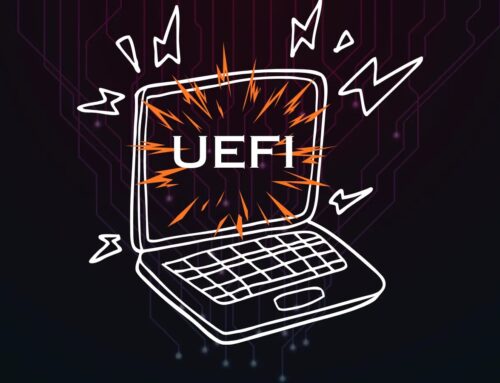
Microsoft PlayReady DRM Used by Netflix, Amazon, and Disney+ Leaked Online
The digital streaming world, fueled by services like Netflix, Amazon Prime Video, and Disney+, relies heavily on robust Digital Rights Management (DRM) systems to protect copyrighted content. A recent and significant security incident has cast a shadow over this ecosystem: the reported compromise of Microsoft’s PlayReady DRM. This breach, involving the leak of critical certificates, has far-reaching implications for content providers and viewers alike.
The PlayReady Leak: A Critical Compromise
Reports emerged from the cybersecurity news landscape, specifically highlighted by CybersecurityNews.com, detailing a disturbing leak concerning Microsoft’s PlayReady DRM. The breach reportedly involved the exposure of crucial certificates, the very digital keys that underpin the security of premium streaming content. The material in question surfaced on GitHub, attributed to an account named “Widevineleak,” raising immediate concerns within the industry.
This incident is not merely theoretical; it directly imperils the content protection mechanisms of some of the world’s largest streaming platforms. Netflix, Amazon Prime Video, and Disney+, all major users of the PlayReady system, are directly impacted. The integrity of their content protection relies on the secrecy and security of these certificates. A compromise of this nature could potentially lead to unauthorized access, duplication, and distribution of copyrighted material.
Understanding Digital Rights Management (DRM) and PlayReady
Digital Rights Management (DRM) encompasses a suite of technologies designed to control access to copyrighted material. Its primary objective is to prevent unauthorized distribution and modification of digital content, ensuring that content creators and distributors maintain control over their intellectual property.
Microsoft PlayReady is a widely adopted DRM technology, providing a secure framework for conditional access and content protection. It functions by encrypting content and using licenses tied to specific devices or users. These licenses are authenticated by certificates, which act as digital assurances of trust and legitimacy. The system employs a complex interplay of cryptographic keys and protocols to ensure that only authorized users on legitimate devices can access encrypted media. The reported leak of these foundational certificates undermines the entire trust model, akin to a master key falling into the wrong hands.
Potential Ramifications and Impact
The implications of this PlayReady DRM leak are multifaceted and severe:
- Unauthorized Content Access: The most immediate and apparent risk is the potential for circumvention of DRM controls, leading to illicit access and piracy of premium content. This could result in significant financial losses for content owners and streaming services.
- Erosion of Trust: A breach of this magnitude can erode consumer trust in the security of streaming platforms and the effectiveness of DRM technologies. Users expect their paid content to be protected.
- Legal and Financial Consequences: Streaming services and Microsoft may face legal repercussions and significant financial penalties due to compromised content security and potential breaches of contractual obligations with content providers.
- Reputational Damage: The incident could damage the reputation of Microsoft as a provider of secure technologies and tarnish the image of affected streaming services.
Remediation Actions and Industry Response
In the wake of such a critical security incident, immediate and decisive action is paramount. While specific details from Microsoft and affected streaming services are often kept confidential for security reasons, standard industry practices for remediation would likely include:
- Revocation of Compromised Certificates: The most crucial step is to invalidate the leaked certificates, rendering them useless for future decryption. This requires issuing new certificates and updating all relevant systems and client applications.
- Key Rotation: Implementing a rapid key rotation strategy to generate and deploy new cryptographic keys across the PlayReady ecosystem.
- Software Updates: Rolling out urgent software updates to client applications (e.g., streaming apps on smart TVs, mobile devices, browsers) and server-side infrastructure to integrate new security measures and account for the certificate revocation.
- Forensic Investigation: Conducting a thorough forensic analysis to determine the root cause of the leak, the extent of the compromise, and to identify any unauthorized access or data exfiltration.
- Enhanced Monitoring: Increasing vigilance and bolstering monitoring capabilities to detect and respond to any attempts at exploiting the leaked information or bypassing DRM controls.
- Collaboration with Law Enforcement: Engaging with law enforcement agencies to investigate the source of the leak and pursue legal action against those responsible.
Relevant Tools for Detection and Mitigation
| Tool Name | Purpose | Link |
|---|---|---|
| Packet Sniffers (e.g., Wireshark) | Network traffic analysis to detect unusual patterns or unauthorized DRM license requests. | https://www.wireshark.org/ |
| Endpoint Detection & Response (EDR) Solutions | Monitoring and detecting suspicious activities on client devices that might indicate DRM circumvention attempts. | Various commercial solutions (e.g., CrowdStrike, SentinelOne) |
| Vulnerability Scanners (e.g., Nessus, OpenVAS) | Identifying unpatched systems or misconfigurations that could be exploited in future attacks. | https://www.tenable.com/products/nessus |
| Security Information and Event Management (SIEM) Systems | Aggregating and analyzing security logs for anomalies related to DRM access and authentication. | Various commercial solutions (e.g., Splunk, IBM QRadar) |
Looking Ahead: The Evolution of Content Protection
The reported PlayReady leak underscores the continuous cat-and-mouse game between content protection mechanisms and those seeking to bypass them. While DRM systems are designed to be robust, they are never entirely impervious. This incident serves as a stark reminder that even foundational security components require constant vigilance, updates, and consideration for potential vulnerabilities.
For the cybersecurity community, this event highlights the critical importance of supply chain security, especially when dealing with widely adopted technologies. The compromise of a single, widely used component can have cascading effects across an entire industry. Content providers and tech companies must continually evaluate their security posture, invest in advanced threat detection, and prepare for rapid response to unforeseen breaches. The future of premium content delivery hinges on the industry’s ability to adapt, innovate, and fortify its defenses against evolving threats.





